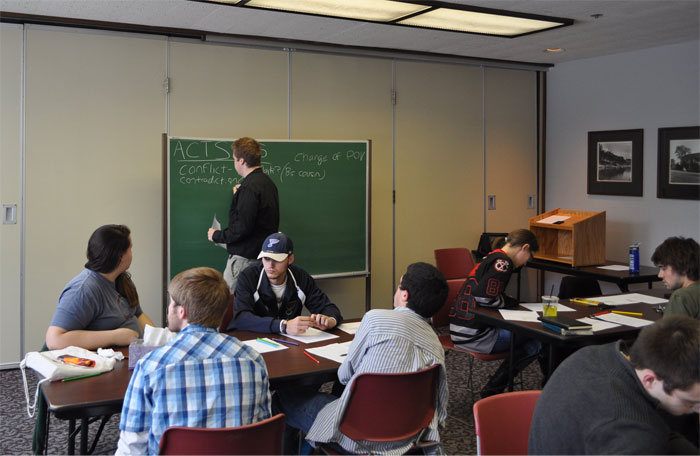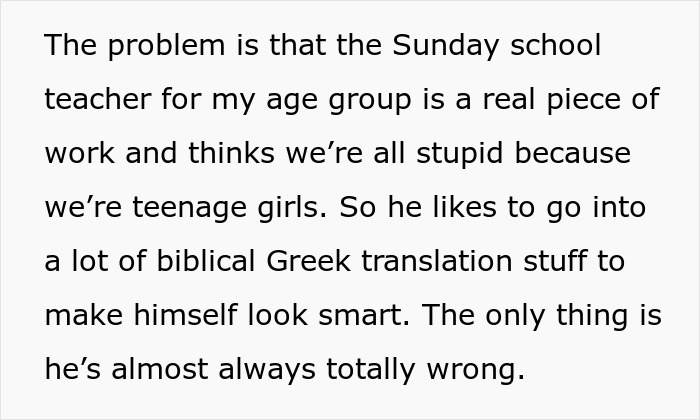Editor’s note: The Catholic Book Club is reading Michael Moore’s new translation of Alessandro Manzoni’s classic Italian novel, The Betrothed.
The Betrothedby Alessandro Manzoni (Author) and Michael F. Moore (Translator)
Modern Library
704p $28.99
Moore’s published translations range from 20th-century classics to contemporary novels. He is the former chair of the PEN/Heim Translation Fund and has a doctorate in Italian from New York University. For many years, he was also an interpreter at the United Nations and a full-time staff member of the Permanent Mission of Italy to the United Nations.
The following interview with Mr. Moore has been edited for length, clarity and style.
James T. Keane: This book was a commitment to read; I can only imagine what it was like to read in a different language, then translate. Why this book and why now?
Michael F. Moore: I promessi sposi (the original Italian title of The Betrothed) is a beautiful, sweeping novel that every Italian has read. While I’ve translated many contemporary authors (including Pope Benedict XVI), I have always wanted English readers to have a deeper sense of Italian literature and culture. Tradition weighs heavily on Italian artists, and when they create, they have to contend with that glorious tradition. Manzoni forged the modern Italian language, and his novel—yes, he wrote only one—is still the greatest novel in the Italian language.
I felt that it was underappreciated in the United States because the existing translations were inadequate; failing to capture the energy, eloquence and range of Manzoni’s prose.
But while I started translating with the ambition to restore this novel to its rightful place in world literature, as I got closer to publication, circumstances in the world lent the novel a renewed importance. First and foremost, the Covid-19 pandemic. In two chapters of the novel, 31 and 32, Manzoni describes the outbreak of the bubonic plague in Milan in 1630, in a report that mirrors, eerily, the moment we have just been through.
The portrait he gives of the Capuchin brothers, to whom the municipal government assigned the responsibility for tending to the sick, the dying, and the dead from the bubonic plague, highlights both their Christian vocation and their practical know-how. Cardinal Federico Borromeo, the archbishop of Milan during those years, reminds the priesthood of their duty to serve the poor and needy. And the hero of the story is Padre Cristoforo, who is unafraid to confront the powerful and sacrifices his life in the service of the plague victims.
The novel has a powerful ethical dimension, sensitive to the moral complexities the characters face but nevertheless clear and firm in its exhortation to justice, faith and forgiveness.
Over the years, The Betrothed has appeared in a number of different lengths, versions and even translations. Did you read all the previous versions, or did you have an ur-text you chose?
Manzoni wrote three versions of the novel. The first, Fermo e Lucia, in 1821, was only published in recent years, primarily for scholars. The second, I promessi sposi, in 1827, and the third, with the same title, in 1840. In that last version, he revised the language but otherwise left the novel unchanged.
I consulted an edition that compares the 1827 and 1840 editions, to understand the care he took in the writing process, but I translated the 1840 edition. On the title page you will notice that it says, “Edition Revised by the Author,” which is what that 1840 edition says, to indicate Manzoni’s rewriting of his own novel.
After I finished my first draft, I consulted two previous translations, as a way of double-checking the accuracy of my version. Where the translations were very far apart, I went back to the Italian I might find a better way to interpret a passage, a word, or an idea.
How would you categorize The Betrothed in terms of genre? Is it a romance, a historical novel, an epic, a war novel? Or a palimpsest of all of these?
He called it a historical novel, in the tradition of Sir Walter Scott, who was hugely popular throughout Europe at the time. I would call it an epic of the Italian people. It is historically faithful, but with elements derived from sources as varied as opera comica and the gothic novel (like Frankenstein or The Mysteries of Udolpho).
A number of years ago I took a class on Don Quixote taught by Edith Grossman, who had just published her translation of Cervantes’s classic. She mentioned that in doing her translation, she consciously tried to use language with Latinate and Romance-language roots, if she had the choice between those and more Germanic-sounding words, so that the book would be in clear English but also convey the Spanish roots. Did you have a similar strategy with your translation from the Italian originals?
Edith is one of the people who encouraged me to take on the novel, advising me to just try a few pages, to see if it was a good fit.
Throughout the translation, I was doing a balancing act between loyalty to Manzoni’s style and a wish to write in good modern American English. I wanted the language to sound neither too antiquated nor too contemporary. His sentences can be very long, and his paragraphs interminable. I sometimes broke them into smaller pieces, without sacrificing any content or word play.
While I did sometimes indulge in Latinate words, I was more interested in restoring the popular appeal of the novel. Too often the classics are rendered in a decorous, elevated style; an approach that would have violated Manzoni’s purpose. He wanted to bring written and spoken Italian closer together. You can see his critique of elaborate language in different parts of the book, particularly at the very beginning, in his introduction, and in his quotations from 17th-century texts.
What were the biggest struggles in translating the text into contemporary English?
Every now and then I would be tempted to use a contemporary expression, like “give me a break” or “get lost,” to capture the emotional temperature of an expression, especially in dialogues. To avoid being too contemporary, I always checked the Merriam-Webster online dictionary, which tells you the earliest date a word or expression was used. I was aiming for expressions that are still in use today, but that have their roots in the 19th century—or even the 20th. But I always wanted the language to sound natural, not stilted.
In general, the main challenge was to capture Manzoni’s shifts of register: One moment he is serious, the next minute he’s ironic; he’s poetic, but he writes with the accuracy of a historian; he’s light-hearted but he’s dead serious. The novel really is an encyclopedia of styles.
I am a big fan of Liu Cixin’s science fiction novels, which are translated from Chinese but also require fairly significant footnotes to explain to an American audience what the author means when he references historical events Americans are ignorant about (for example, the Cultural Revolution, or famous Chinese medieval figures). How did you handle this quandary between providing necessary context and bogging down the flow of the text, given that history is a major player in The Betrothed?
I didn’t want a lot of footnotes, which I felt would distract from the story. Since Manzoni himself was explaining events that had taken place 200 years before (he wrote in the 1820s; the story takes place in 1628-1630), he often explains events carefully. To help the modern reader, we have a map of northern Italy at the time of the story in the first pages, and at the end of the novel a note on the historical background and a list of historic characters.
Having said that, one of the harder things to convey was courtship, especially for today’s young people. The most that Manzoni says about Renzo and Lucia’s courtship before their wedding day is that Renzo “discorreva” with Lucia: literally, he spoke with her. In traditional society, for a man to even approach a single woman was to express intentions other than friendship!
Why do you think this novel (and this translation) have struck a chord with contemporary readers?
This is a novel about a world beset by corruption, social injustice, famine, plague, all aggravated by war and foreign occupation. Sound familiar?
Manzoni lived through a tumultuous time, from the French Revolution right on through to the birth of the Italian nation. He recognized the need for change but also feared the tyranny of the mob. At the center of his novel—which takes place against the background of a great conflict between Spain, France, and the Holy Roman Empire—is a humble peasant couple that simply wants to get married and is prevented from doing so by the whims of the powerful.
These themes all resonate with our own age. We have been through a devastating period, with a pandemic, politics at war with science, rising authoritarianism in the world and a popular outcry for justice. The failures, even the evils of capitalism have become glaring (I can’t stop thinking of the plight of the elderly in nursing homes, left to die without the comfort of family or loved ones by their side), and we’re struggling to find a way forward. Manzoni’s voice can cut through the fog of our grief with wisdom, wit and an overarching appeal for charity.
I think my translation has struck a chord because it speaks with all of Manzoni’s eloquence and musicality but in the language of today.
Pope Francis has described this as one of his favorite novels of all time. Any speculation why?
In public appearances, he has mentioned two aspects. First, that it is a story of a young couple overcoming obstacles before they can finally marry. He sees the novel as a kind of parable of the paths people in love will have to travel before they can be together. Second, that he sees Cardinal Borromeo as a good example of the pastoral vocation. Let us remember that a “pastor” is literally a shepherd, the good shepherd who looks after his sheep.
On a more personal note, Pope Francis has written me a letter of appreciation citing what he thinks the novel’s virtues are: “Your efforts will help to spread the word of Manzoni’s masterpiece, which maintains its great relevance and solid educational and spiritual value. Today the world needs to regain the culture of providence, hope, and forgiveness.”
***
Not a member of the Catholic Book Club yet? You can read up on our past book selections here, and you can join our Facebook discussion group here.
Adblock test (Why?)






























